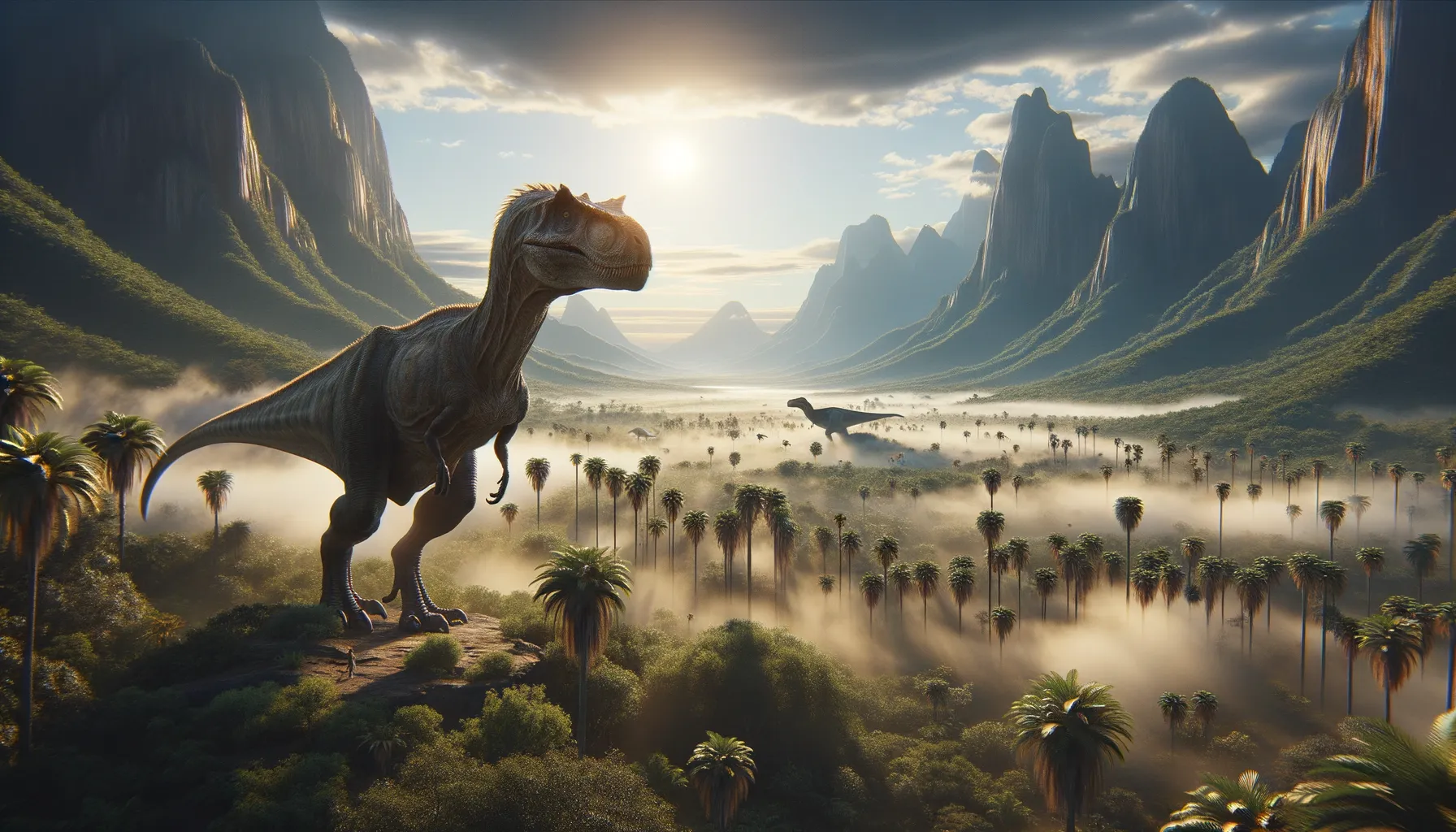
Capitalsaurus
A predator from Washington's past!
Period
Cretaceous
Length
Approximately 20 feet long.
Height
Around 10 feet at the hip.
Weight
Estimated 1 to 2 tons.
The Capitalsaurus is a lesser-known dinosaur that roamed the earth during the Late Cretaceous period. It is believed to be a theropod, potentially related to other well-known carnivorous dinosaurs like the Tyrannosaurus rex. Its fossils, found in the region of what is now Washington, D.C., offer a glimpse into the prehistoric ecosystem of North America. Despite limited findings, Capitalsaurus is an intriguing subject for paleontologists, highlighting the diversity of dinosaurs that once inhabited the continent.
Diet
Capitalsaurus was likely a carnivore, feeding on smaller dinosaurs and possibly scavenging for carrion. Its teeth suggest a diet primarily composed of meat, with sharp edges well-suited for cutting flesh.
Hunting
Capitalsaurus probably relied on stealth and surprise to hunt its prey, using its moderate speed to close in on targets. Hunting strategies might have involved ambush tactics or cooperative hunting if it exhibited social behavior.
Environmental challenges
During the Late Cretaceous, Capitalsaurus faced various environmental challenges, including fluctuating climates and periods of volcanic activity. These changes would have affected the availability of food and suitable habitats. Additionally, competition with other carnivorous dinosaurs and the potential threat from larger predators or natural disasters would have posed significant risks to its survival.
Speed
Moderate, not very fast.
Lifespan
Estimated 20 to 30 years.
First discovery
Discovered in 1898 in Washington, D.C.
Fun Facts
- Capitalsaurus, also known as 'the Capital dinosaur,' was discovered in Washington, D.C., where it became the official dinosaur of the district.
- The fossils of Capitalsaurus were found in the early 19th century, but it was not given an official name until the 1990s.
- Capitalsaurus lived during the Early Cretaceous period, around 110 million years ago.
- This dinosaur is believed to be a theropod, which means it was likely a meat-eating dinosaur walking on two legs.
- While only partial remains have been found, Capitalsaurus gives valuable insights into the region's ancient past.
- Capitalsaurus is honored with its own day; January 28 is 'Capitalsaurus Day' in Washington, D.C.
- To this day, scientists are still discovering more about Capitalsaurus and how it fits into the dinosaur family tree.
Growth and Development
Capitalsaurus likely followed the typical growth pattern of theropods, experiencing rapid growth during its juvenile stage and slowing as it matured. This growth strategy would ensure it reached a size capable of defending itself against other predators. The fossil record, though sparse, suggests varying growth rates depending on environmental factors and available resources.
Habitat
Capitalsaurus thrived in lush, forested areas with nearby water sources, abundant prey, and ample vegetation. The diverse ecosystems of its time provided a perfect environment to sustain a large, carnivorous dinosaur. Its habitat would have included a mix of lowland areas and upland forests, offering a variety of hunting grounds and seasonal resources.
Interaction with other species
Capitalsaurus interacted with a range of other dinosaur species, both herbivorous and carnivorous. It may have competed with other predators for food and territory. Social dynamics with other theropods could have involved both cooperation and rivalry, depending on the circumstances.
Natural lifespan
Capitalsaurus naturally lived up to 30 years.
Reproduction
Reproduction in Capitalsaurus was likely through egg-laying, similar to other theropods. Nesting sites were probably located in hidden or protected areas, where parents could guard the eggs from predators. Little is known about parental care, but it might have involved some level of post-hatching protection or guidance.
Social behaviour
The social behavior of Capitalsaurus remains speculative due to limited fossil evidence. It is possible that it exhibited solitary behavior, typical of many predatory dinosaurs. Alternatively, it may have engaged in some social interactions, like forming temporary hunting packs or establishing territories.
Fossil locations
Fossils of Capitalsaurus were discovered in Washington, D.C., making it a unique find in this region. The area provides one of the few known examples of predatory dinosaur remains from this part of North America. Further excavations may help understand its range and habitation patterns better.
